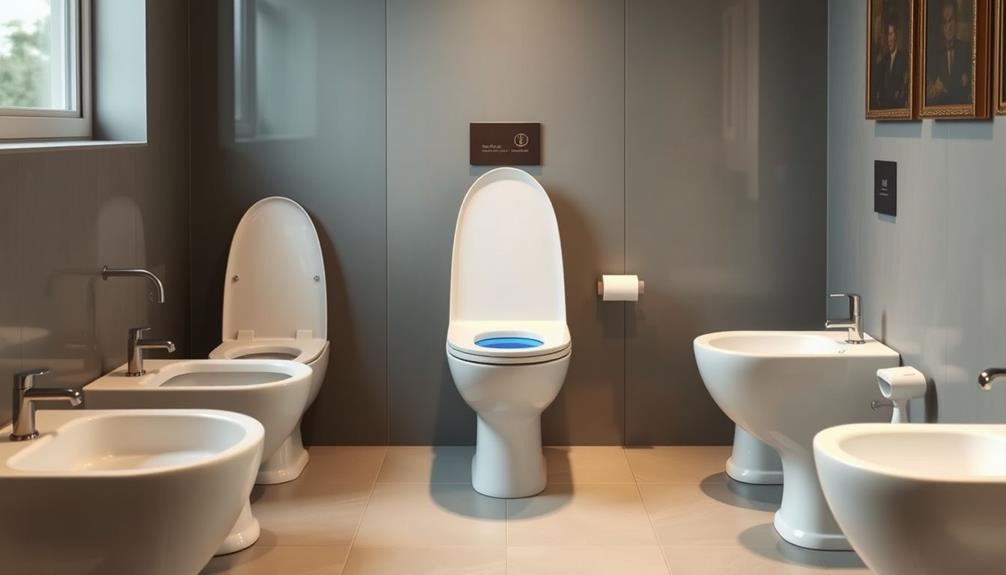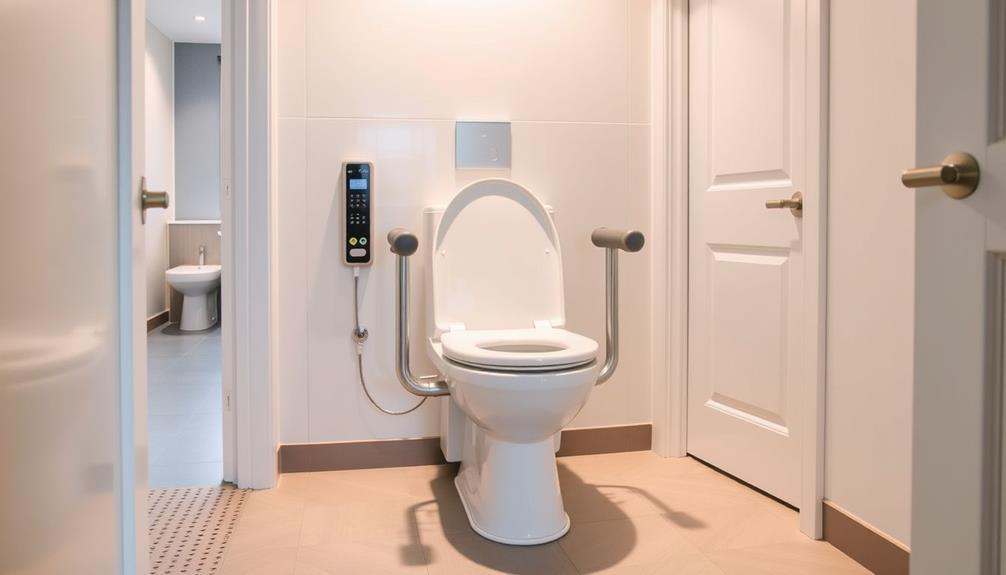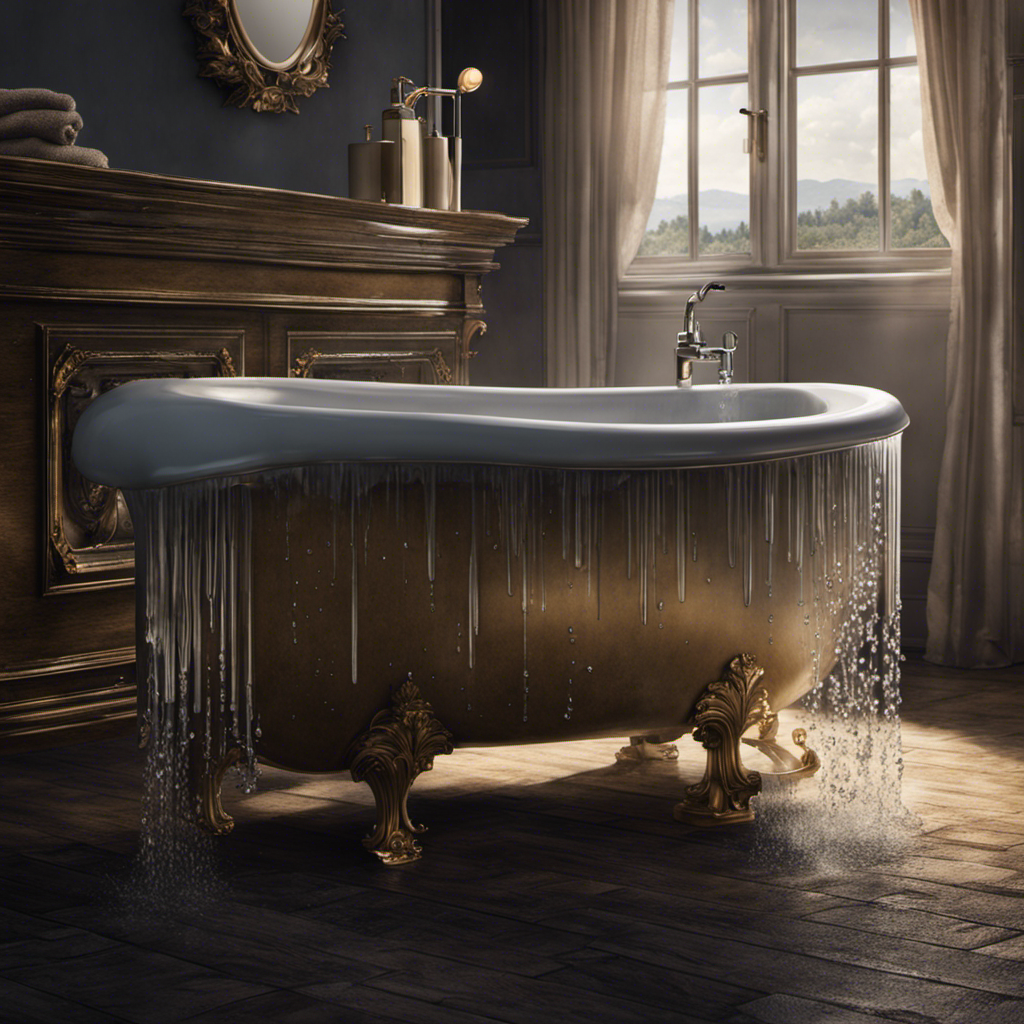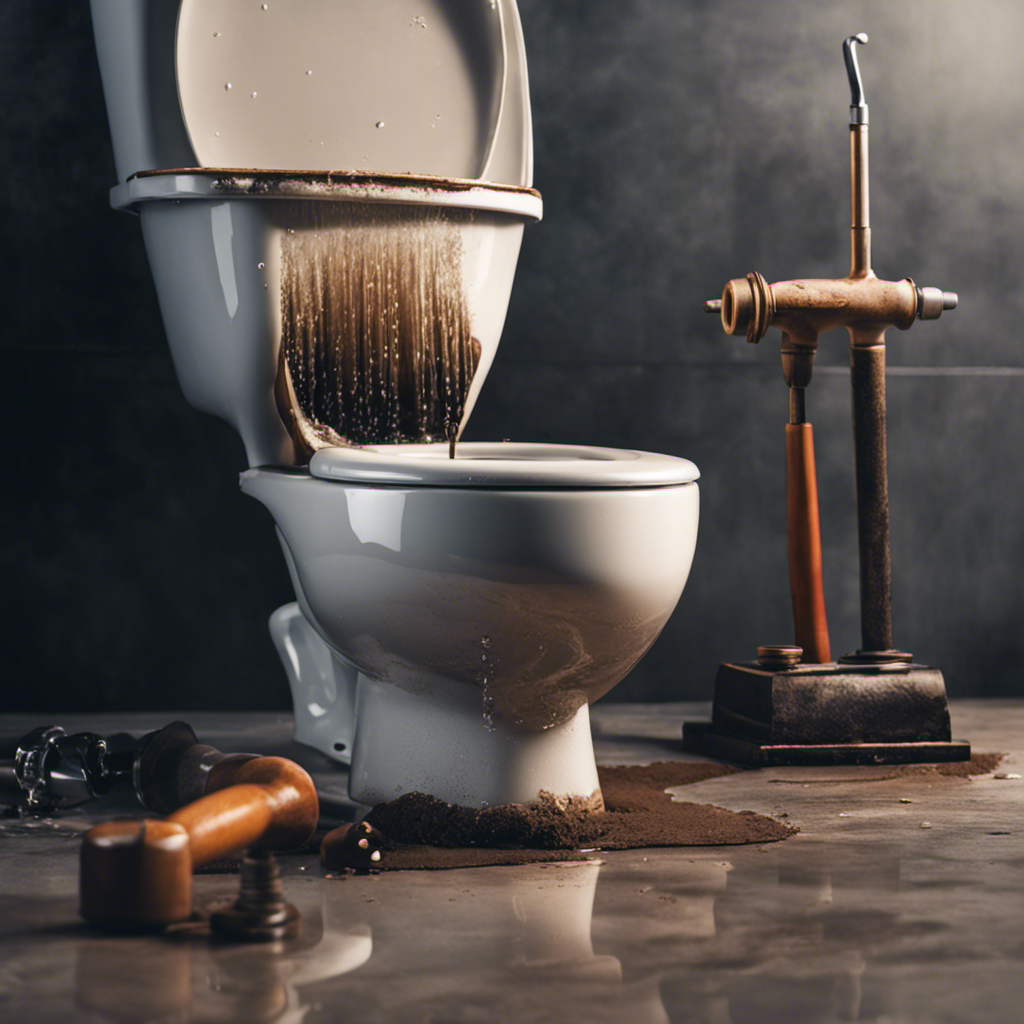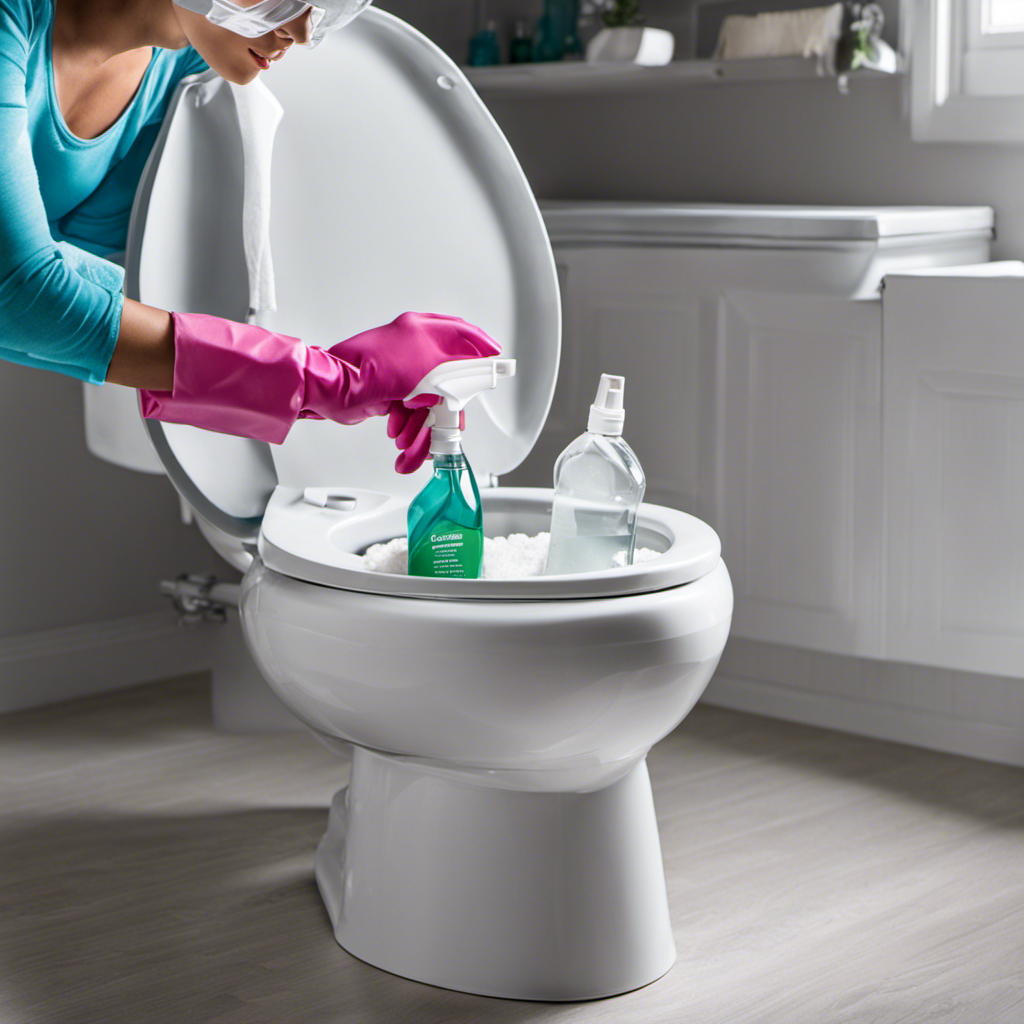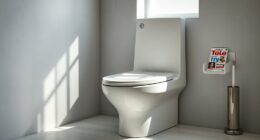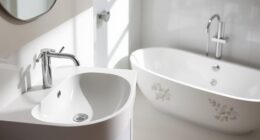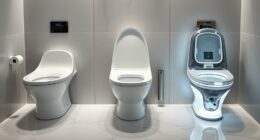Bidets date back to 17th century France, initially used by the aristocracy. They saw a resurgence post-WWII, especially in Europe and Japan, overcoming stigma around their use. Modern bidets have evolved, integrating into smart toilets that offer features like heated seats, customizable water temperature, and self-cleaning nozzles. These advancements promote better hygiene and sustainability, greatly cutting down toilet paper use. Now, using a bidet can enhance comfort and cleanliness while benefiting the environment. If you're curious about more on how bidets can transform your bathroom experience, there's plenty more to uncover.
Key Takeaways
- Bidets originated in France during the late 17th century, initially serving the aristocracy with porcelain bowls on wooden stands.
- The 1750s saw advancements with the bidet seringue, improving the water spray for enhanced cleansing.
- Post-WWII stigma associated bidets with brothels, delaying their acceptance until a resurgence in Europe and Japan emerged.
- Modern smart toilets integrate bidets with features like heated seats, customizable settings, and self-cleaning nozzles for enhanced hygiene and convenience.
- The growing interest in sustainable hygiene practices has driven the popularity of bidets, reducing toilet paper usage and environmental impact.
Evolution of Bidets
The bidet's journey through history reveals its fascinating evolution from a simple hygiene tool to a modern bathroom essential. Originating in France in the late 17th century, the term "bidet" translates to "small horse," reflecting its initial design aimed at enhancing personal hygiene. Early versions were porcelain bowls on wooden stands, primarily used by the aristocracy for cleaning areas of the body between baths.
With the growing awareness of environmental impact and proper disposal, the bidet offers a sustainable alternative to traditional toilet paper, promoting better hygiene practices. A significant advancement occurred in the 1750s with the introduction of the bidet seringue, which allowed for a spray of water, greatly improving functionality.
Despite facing stigma after World War II, linked to brothels, the bidet has seen a resurgence in popularity, especially in Europe and Japan, where it's now viewed as an essential fixture.
Today, modern bidets have evolved into integrated bidet systems, often found in bidet toilet seats. These smart toilets feature innovative designs, including heated seats, adjustable water temperature, and touchless operation, enhancing your comfort and hygiene.
The history of the bidet illustrates its remarkable journey, transforming personal care into a luxurious experience that caters to the needs of today's users.
Cultural Perspectives on Hygiene

Different cultures approach hygiene with unique practices and beliefs, shaping how people view cleanliness. For many, the choice of using a toilet or a bidet reflects deeper cultural perspectives on hygiene practices.
In regions where animal welfare is a concern, like in the vegan community, the choice of hygiene products may also reflect ethical considerations regarding sustainability and environmental impact. For instance, the growing demand for vegan products highlights a shift in consumer values that can extend to hygiene practices, including the preference for water-based cleansing methods over traditional toilet paper sustainability of vegan diets.
- Islamic Etiquette: In regions like the Middle East and South Asia, bidets are integral to Islamic toilet etiquette, emphasizing the role of water in maintaining cleanliness.
- European Norms: In many European countries, especially in southern Catholic nations, bidets are standard fixtures, showcasing a cultural preference for water-based cleansing over toilet paper.
- U.S. Stigma: In contrast, the United States has seen a stigma around bidets, stemming from discomfort discussing bodily functions, which limits their acceptance despite the benefits of modern smart toilets that incorporate bidet features.
As global attitudes shift toward sustainability and health, cultural perspectives on hygiene are evolving. More people are becoming bidet users, recognizing the advantages of water for cleanliness.
This trend reflects a growing awareness that hygiene practices can vary widely, influencing how individuals perceive and adopt modern solutions like bidets and smart toilets.
Health Benefits of Bidets

Cultural perspectives on hygiene are increasingly recognizing the health benefits of bidets. These fixtures effectively flush away bacteria, reducing the risk of urinary tract infections (UTIs), particularly those caused by E. coli, which affects many women. By opting for a bidet, you're choosing a method that promotes better personal hygiene.
Additionally, studies have shown that achieving proper hygiene can play a significant role in preventing infections, such as those associated with breast health and overall well-being, as highlighted in mammography guidelines. The gentle cleansing action of bidets enhances cleanliness without the friction associated with traditional toilet paper, which can lead to skin irritation. This is especially beneficial for individuals with postpartum scarring, as bidets provide comfort and promote healing in a sensitive area.
Moreover, studies indicate that using bidets can lower the likelihood of infections such as bacterial prostatitis, contributing to better overall genital health. By eliminating inadequate cleaning often associated with dry-wiping, bidets emphasize the importance of thorough hygiene practices.
Incorporating a bidet into your routine not only enhances your comfort but also supports your health. With the many health benefits they offer, it's no wonder that more people are embracing this innovative approach to cleanliness.
Environmental Impact of Bidets

Bidets offer a remarkable solution for reducing your environmental impact. Historically, bidets gained popularity in European brothels, where cleanliness was valued. Following World War II, their adoption spread, highlighting their benefits.
Bidets also promote better hygiene, which can lead to improved health outcomes and reduced reliance on other personal care products. Here's how bidets contribute to environmental sustainability:
- Reduce toilet paper usage: On average, users cut down around 40 rolls per year, which means fewer trees are chopped down.
- Sustainable water consumption: While toilet paper production uses about 37 gallons of water per roll, bidets consume considerably less water per use, promoting more eco-friendly habits. This supports a high-altitude hiking approach to reducing resource consumption.
- Long-term economic savings: By lowering your need for toilet paper and plumbing repairs caused by clogs, you'll see a decrease in your household expenses.
Integration With Smart Toilets
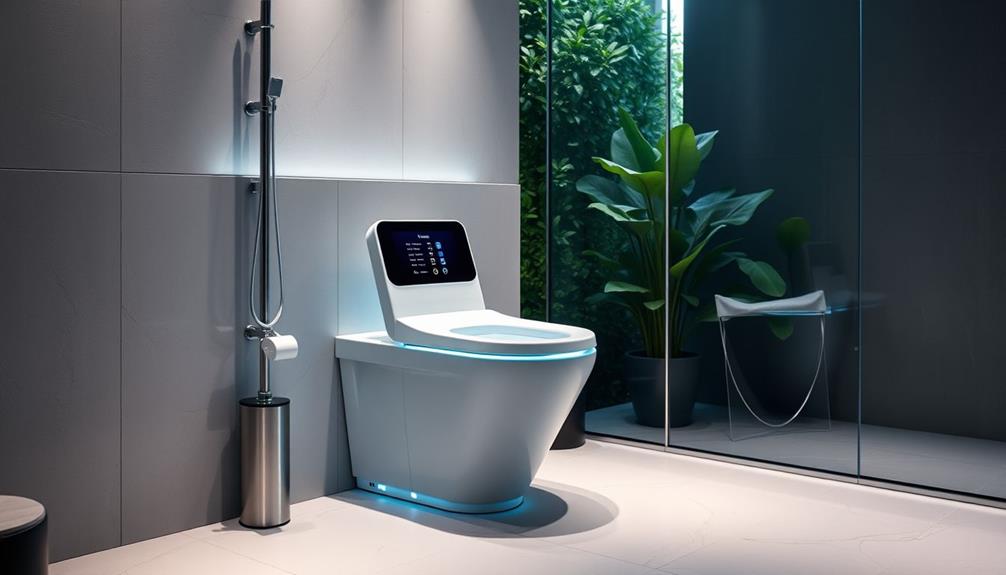
As the demand for eco-friendly bathroom solutions rises, smart toilets are stepping up to the plate by integrating bidet features that enhance hygiene and comfort.
These modern marvels combine washing and drying functions, making them a favorite for those seeking a cleaner experience. With customizable settings for water temperature and pressure, you can tailor your cleansing routine to your exact preferences.
Additionally, incorporating advanced features in daily living can promote diversification of retirement portfolio and overall well-being. Many smart toilets also come equipped with integrated air dryers and heated seats, offering a level of comfort that traditional bidets simply can't match. You'll appreciate the convenience of having everything you need in one unit.
Plus, the self-cleaning nozzles and deodorizing systems guarantee that your toilet stays fresh and hygienic without requiring manual intervention.
This integration reflects the booming economy of smart home technologies, driven by consumer demand for greater hygiene and sustainability.
As you consider upgrading your bathroom, the combination of bidet features and smart toilets presents an appealing option that promotes both cleanliness and convenience. Embracing this advanced technology not only enhances your personal hygiene but also contributes to a more eco-friendly lifestyle.
Frequently Asked Questions
What Is the History of the Bidet Toilet?
The bidet toilet has evolved from a simple French cleansing device to modern fixtures. You'll find advanced designs today that combine convenience and hygiene, making personal care easier and more efficient in your daily routine.
How Do You Connect a Bidet to a Modern Toilet?
To connect a bidet, turn off the toilet's water supply, install a T-valve, connect the bidet hose, and plug in the electric unit. Then, turn the water back on and test for leaks.
Why Did We Stop Using Bidets?
You stopped using bidets mainly due to cultural discomfort and the convenience of toilet paper. Many perceived bidets as unnecessary luxuries, while post-war associations and hygiene misconceptions further diminished their popularity in American households.
Why Are Bidets Separate From Toilets?
Bidets are separate from toilets to enhance hygiene and provide a more effective cleaning method. This separation allows you to control water pressure and temperature, offering a customizable experience that integrated units often can't match.
Conclusion
To summarize, bidets have evolved from simple hygiene aids to essential components of modern smart toilets, transforming how we approach personal care. Imagine a busy family in a small apartment, where space is limited. By installing a smart toilet with a built-in bidet, they not only save room but also reduce toilet paper waste and improve their health. Embracing this technology can enhance your daily routine while promoting sustainability—making it a win-win for everyone!
